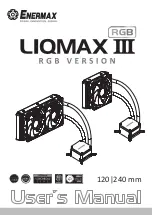
www.ti.com
2
Operation
2.1
Quick Start List for Stand-Alone Operation
2.1.1
Power and Ground
2.1.2
Audio
2.1.3
Gain Control
2.1.4
Shutdown Controls
Operation
This section describes how to operate the TPA2013D1EVM.
Use the following steps when operating the TPA2013D1EVM as a stand-alone or when connecting the
EVM into existing circuits or equipment.
1. Ensure the external power sources are set to OFF.
2. Set the power supply voltage between 1.8 V and 5.5 V. When connecting the power supply to the
EVM, make sure to attach the ground connection to the GND connector, J1, first and then connect the
positive supply to the V
DD
connector, J2. Verify that the connections are made to the correct banana
jacks.
3. V
CC
may be set lower than V
DD
. They are independent of each other.
4. V
CC
must be greater than 3 V.
5. V
CC
must not exceed 5.5 V.
Note:
Do not connect V
DD
to the V
CC
header pin. This may cause damage to the device.
1. Ensure that the audio source is set to the minimum level.
2. Connect the audio source to the input RCA jack VIN (J7). Do not connect an audio source to the pins
on J8. The pins on J8 are for measurement purposes only.
3. Connect speakers (4
Ω
to 32
Ω
) to the output RCA jacks OUT+ and OUT- (J4 and J5, respectively).
4. J6 allows the user to connect one of the outputs to an RC filter. Note that the user must provide the
necessary capacitors, C7 and C8.
The TPA2013D1 has three gain settings: 2 V/V, 6 V/V, and 10 V/V.
1. Use jumper J13 to set the gain as 2 V/V, 6 V/V or 10 V/V. To achieve 2 V/V, place the jumper between
heads 1 and 2; for 10 V/V, shunt heads 2 and 3; for 6 V/V, remove the jumper and let the gain pin
float.
1. The TPA2013D1EVM provides independent shutdown controls for the Class-D amplifier and the boost
converter. Pins SDb and SDd shut down the boost converter and Class-D amplifier, respectively. They
are active low. Connect jumpers between headers 2 and 3 on J11. Press and hold pushbutton S1 to
place the boost converter in shutdown. Release pushbutton S1 to activate the boost converter.
2. Connect jumpers between headers 2 and 3 on J12. Press and hold pushbutton S2 to shutdown the
Class-D amplifier. Release pushbutton S2 to activate the Class-D amplifier.
3. Connect a jumper across J9. LED D1 lights up. When LED D1 is on, the boost converter is active.
4. Remove J9 to disconnect D1, and reduce the quiescent current of the EVM.
5. Connect a jumper across J10. LED D2 lights up. When LED D2 is on, the Class D amplifier is active.
6. Remove J10 to disconnect D2, and reduce the quiescent current of the EVM.
7. The boost converter is shut down by moving jumpers J11 between headers 1 and 2. This ties the
shutdown pins directly to ground where it can be held for an indefinite period of time. Move the
jumpers back between headers 2 and 3 to tie the shutdown pins to V
DD
to enable the boost converter
or Class-D amplifier. Remove J9 and J11 to achieve the minimum boost shutdown current.
8. The Class-D amplifier is shut down by moving jumpers J12 between headers 1 and 2. This ties the
2
TPA2013D1EVM
SLOU194 – August 2007




























